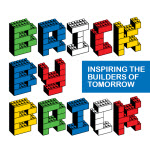By Archana Mehta
In this guest post reprinted with permission of the HR Certification Institute, we take a look at the high-performing culture at The LEGO Group, which engenders creativity and imagination, and plays well with its success in the global marketplace.
 |
They come in all colors and are synonymous with childhood: shiny building blocks used by children to expand their imagination and construct everything from castles to spaceships.
At The LEGO Group’s U.S. headquarters, LEGO Systems, Inc., in Enfield, Conn., these building blocks, called bricks, are a way of life. The toy bricks are used for inspiration during business meetings; virtually every cubicle includes LEGO constructions; life-sized LEGO characters greet you as you stroll the lively office buildings; and even the lobby features LEGO-built chandeliers.
Indeed, imagination, creativity and innovation are essential drivers of the corporation’s culture. They’re critical factors that help the privately owned company continue to expand globally and broaden its exposure to millions of children around the world.
Central to that effort: a savvy HR team that instills the company’s culture in its 10,000 employees who span more than 130 countries.
“Only the best is good enough.” This motto is painted on the walls of the LEGO Systems facility in Enfield. A motto that was created by the company’s founder nearly 80 years ago, it’s a quote that virtually every employee who works at The LEGO Group internalizes.
The company has a high-performing culture — and nearly every decision that’s made is done with a focus on its core audience: children.
With revenues last year of more than $4 billion, the world’s third largest manufacturer of play materials is clearly doing something right. According to The LEGO Group’s annual report for 2012, the Denmark-based company has experienced yearly revenue growth of at least 15 percent for five years running.
But with phenomenal growth comes a set of fresh challenges: the need to learn about new global markets and cultures and recruit the right talent for those regions — especially people who understand and connect with the company’s core mission and values. Moreover, the company knows it must continue to balance its trademarked physical construction toys with the opportunities of an increasingly digital world. And the HR team strives to pursue a unified agenda in the face of an array of different initiatives the growing company continues to pursue.
Still, there’s one overriding initiative The LEGO Group’s capable HR team seems eager to accomplish: preserving the culture that has served the company so well in the last 80+ years in the face of organizational growth. “Focusing on leadership development is one way of preserving the LEGO culture,” says Shannon Paynter, HR manager for Global Talent Management, who holds the Senior Professional in Human Resources (SPHR®) credential.
In the Enfield facility, it’s apparent that the atmosphere is conducive to having fun. Nearly every cube has a LEGO sculpture that reflects the occupant’s personality -anything from bright orange LEGO pencil and paper clip holders to custom LEGO character creations more than two feet tall. And there are table tennis and foosball tables, flat-screen televisions with Wii game controls and outside volleyball and basketball courts. Children are also welcome at the facility.
“The company’s atmosphere centers around play,” Paynter says, citing, in particular, the LEGO play areas found all throughout the campus that are often used by the children who visit.
How does The LEGO Group maintain this same culture in every site around the world? Just ask Barbara Walton, SPHR, who recently assumed the role of director of Global Recruitment for The LEGO Group. Her role was created to understand just this: how to build the correct strategies and processes to attract and retain the top talent needed for extensive global growth.

Cultural differences and global values are important, but what about legal compliance in various jurisdictions? How do you reconcile those differences across the organization?